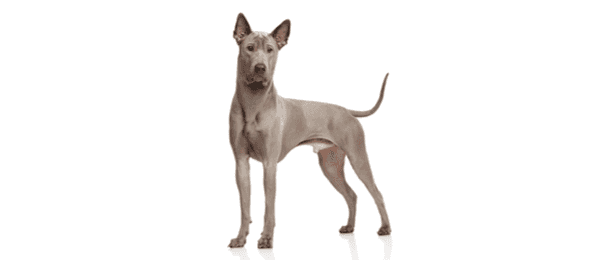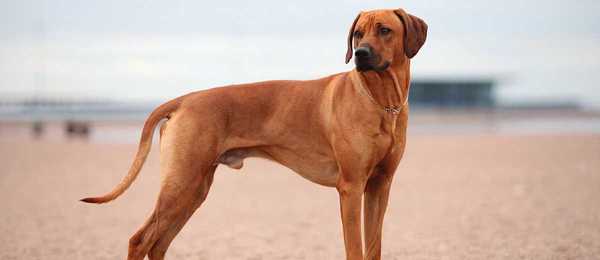
Thai Ridgeback Dogs & Puppies
View Adoptable Pets for This Breed

Traits and Characteristics
type
weight
height
family
A muscular, medium-sized, pariah-type dog, the Thai Ridgeback has a wedge-shaped head, prick ears, spotted or solid black or blue tongue, smooth and short coat in an array of colors with a tail that’s held vertically or curved upward. His distinct ridge on the back, which can be arranged in one of eight different patterns, is formed by hair growing in the opposite direction from the rest of his coat. Agile and athletic, with an impressive jumping ability, he was bred for hunting and guarding. The Thai Ridgeback maintains those same talents today and also is suitable as a companion dog.
Ready to see what dogs fit you best? Take our short quiz to find out!
Energy Level
Exercise Requirements
Playfulness
Affection Level
Friendliness to Dogs
Friendliness to Other Pets
Friendliness to Strangers
Watchfulness
Ease of Training
Grooming Requirements
Heat Sensitivity
Vocality
Disclaimer: While the characteristics mentioned here may frequently represent this breed, dogs are individuals whose personalities and appearances will vary. Please consult the adoption organization for details on a specific pet.
Temperament
A muscular, medium-sized, pariah-type dog, the Thai Ridgeback has a wedge-shaped head, prick ears, spotted or solid black or blue tongue, smooth and short coat in an array of colors with a tail that’s held vertically or curved upward. His distinct ridge on the back, which can be arranged in one of eight different patterns, is formed by hair growing in the opposite direction from the rest of his coat. Agile and athletic, with an impressive jumping ability, he was bred for hunting and guarding. The Thai Ridgeback maintains those same talents today and also is suitable as a companion dog.
Upkeep
The Thai Ridgeback has a short, straight coat that seasonally sheds, typically twice a year at most, thus requiring frequent brushing during that time. Otherwise, occasional brushing and bathing, as well as regular nail trimming, teeth brushing and ear cleaning, will keep the Thai Ridgeback looking his best. Energetic and playful, the Thai Ridgeback should be given plenty of exercise, whether it’s free play or running in a fenced yard or taken on several daily walks. He also enjoys swimming, hiking and retrieving, and can be trained for agility, obedience and rally.
Health
- Major Concerns: N/A
- Minor Concerns: Dermoid Sinus Cyst
- Occasionally Seen: Hip dysplasia
- Suggested Tests: N/A
- Lifespan: 12 to 13 years
History
The Thai Ridgeback’s origin is shrouded in mystery, though we do know the breed was developed in Thailand, hence the name. Early writings describing the Thai Ridgeback date back to the 17th century, positioning the breed with a ridge of hair running down his back as a hunting and guard dog. Although the United Kennel Club has recognized the breed since 1996, and the American Kennel Club recognizes the breed as part of its Foundation Stock Service, the Thai Ridgeback remains a relatively rare breed outside of Thailand.

